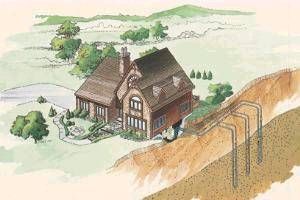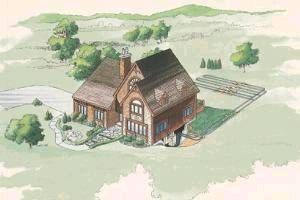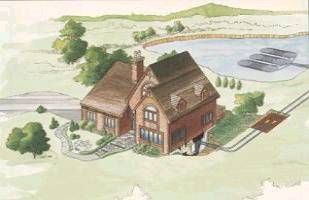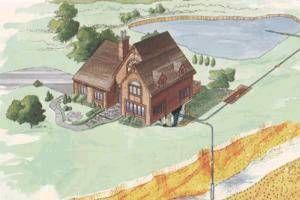Types of Loop Fields
Vertical Loop Fields
Vertical Loops are used extensively where land area is limited or soil conditions prohibit digging the more economical horizontal loops. A pair of pipes with a special U-bend assembly at the bottom is inserted into a bore hole that averages between 150 to 250 feet deep per ton of equipment. These holes are then back-filled with a special grout solution to ensure good contact with the earth.


Horizontal Loop Fields
Horizontal Loops are installed in areas where the soil conditions allow for economical excavation. Taking up more land area than any other loop type, they are used where space permits. Trenches are normally about six feet deep with multiple pipes placed in the trench at different depths. Normally, several hundred feet of trench is required, but where space permits horizontal loops are considered desirable.
Pond Loops
Pond Loops are usually very economical to install. If a pond or lake at least eight feet deep is available, pond loops can utilize the water (rather than soil) to transfer heat to and from the pond. A coiled pipe is placed in the water, which should cover about 1/3 acre. Reduced installation costs and high performance are characteristics of his type of loop.


Open Loops
Open Loops installations actually pump water from an underground aquifer through the geothermal unit and then discharge that water to a drainage ditch or pond. The geothermal unit processes the heat energy from the water just like a closed loop installation. Discharging water to a "return" well is sometimes effective, but sending water to a pond or lake is considered more reliable.